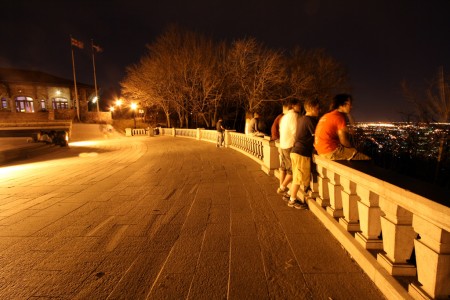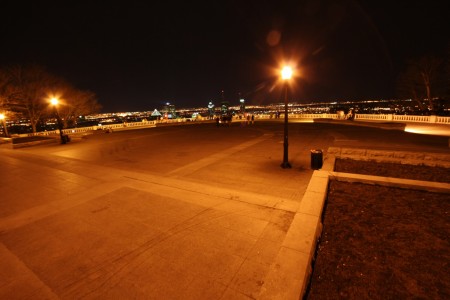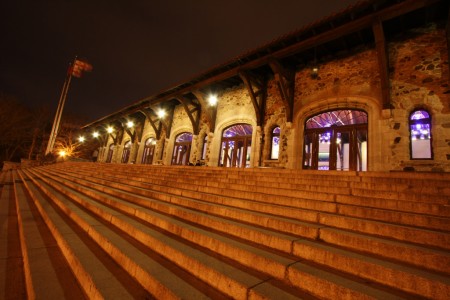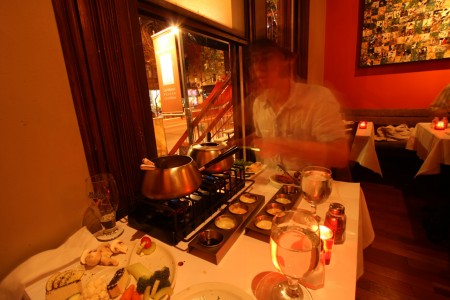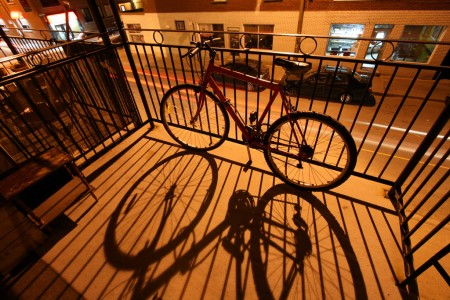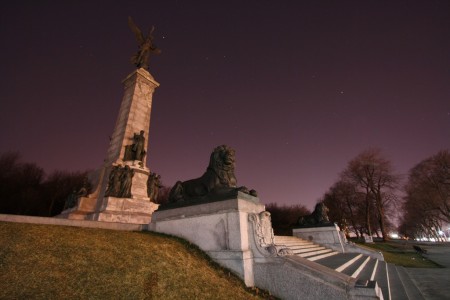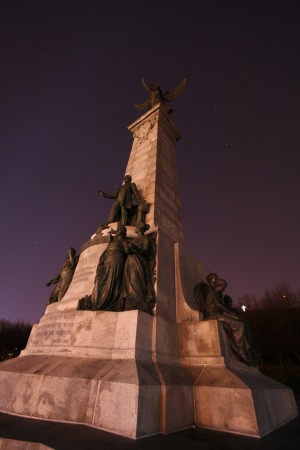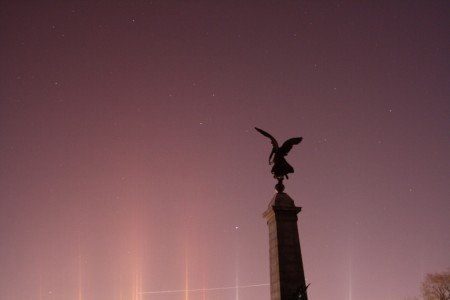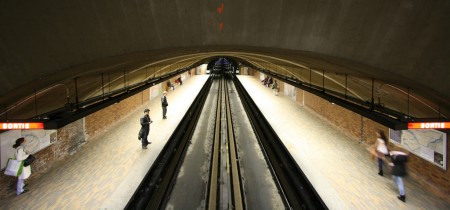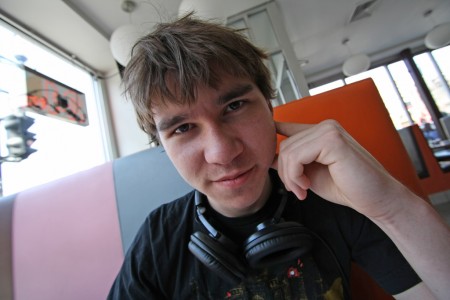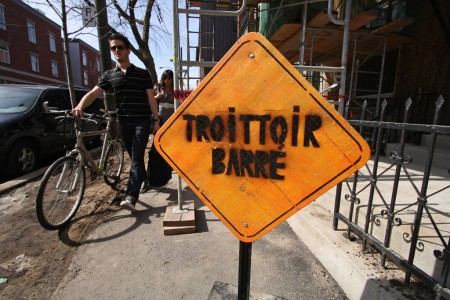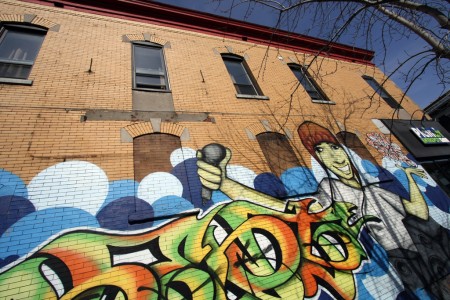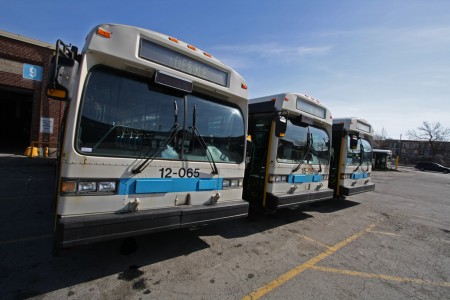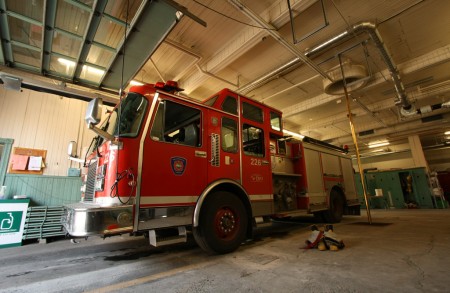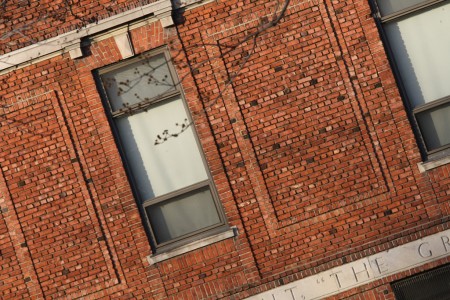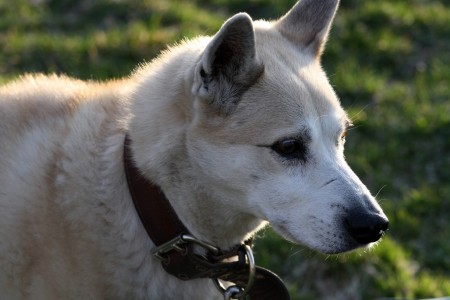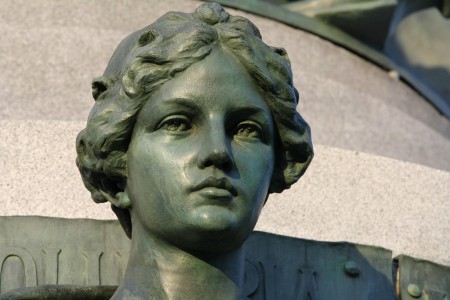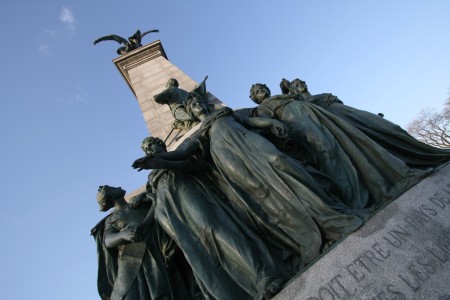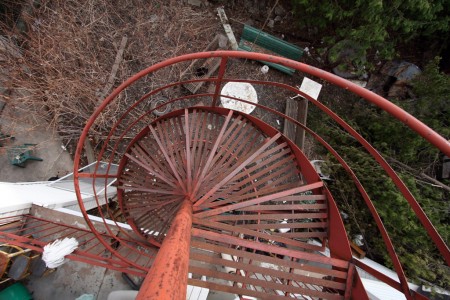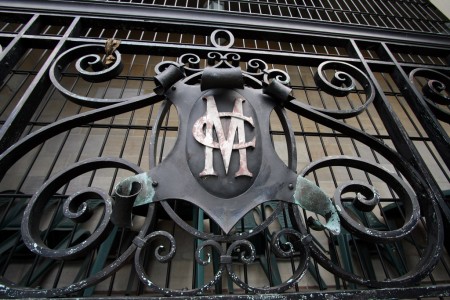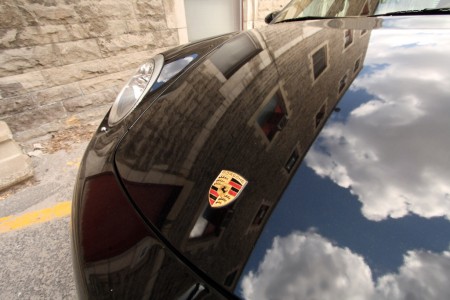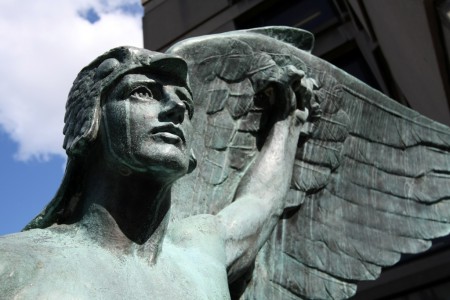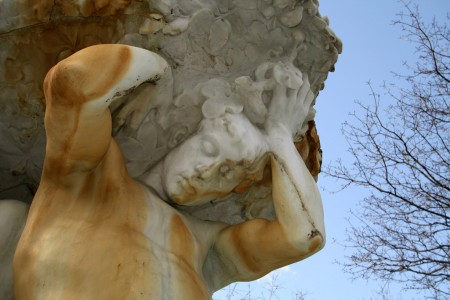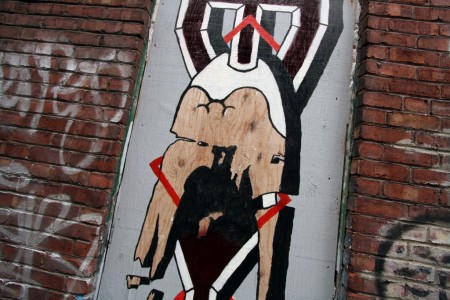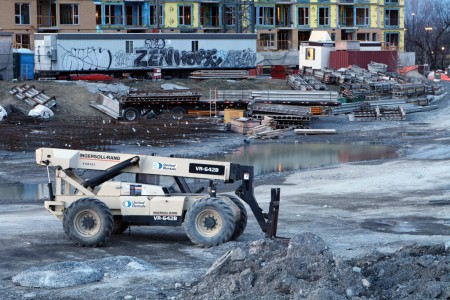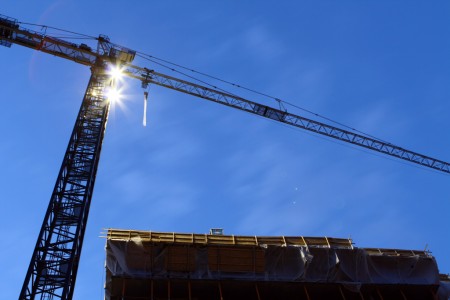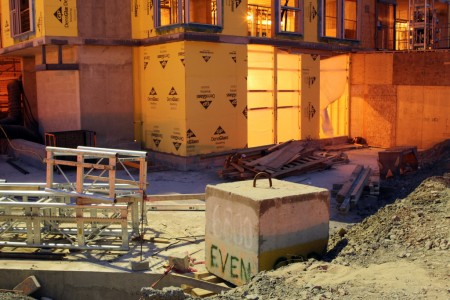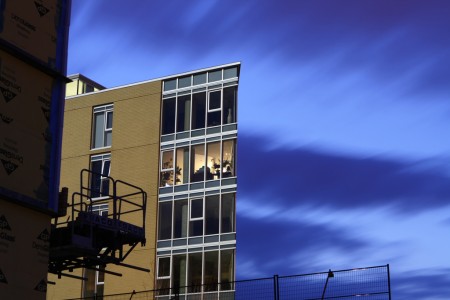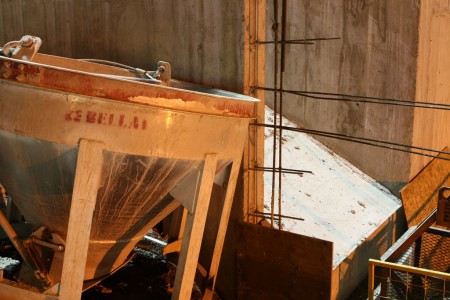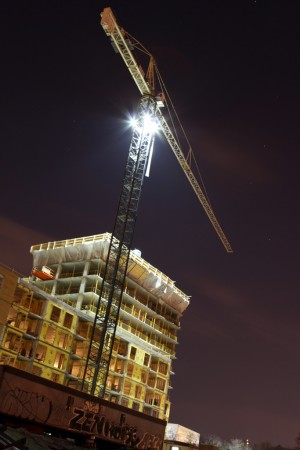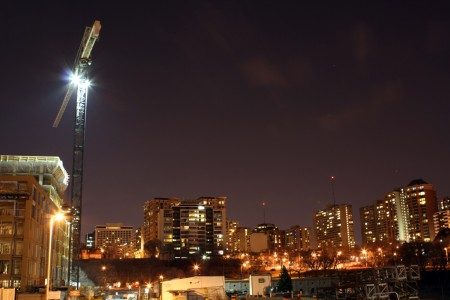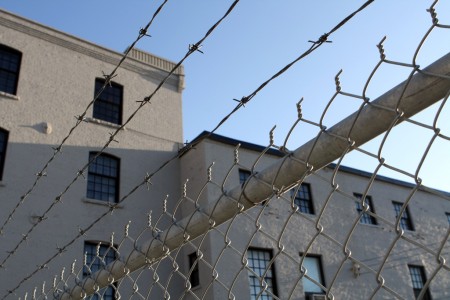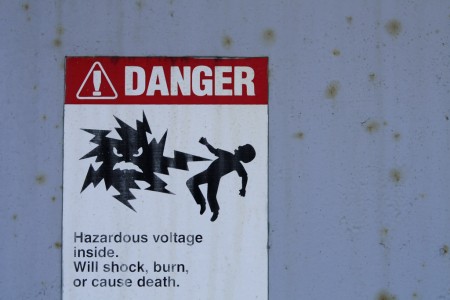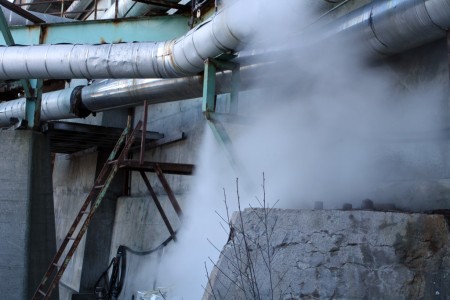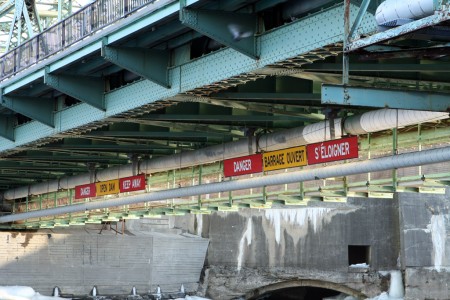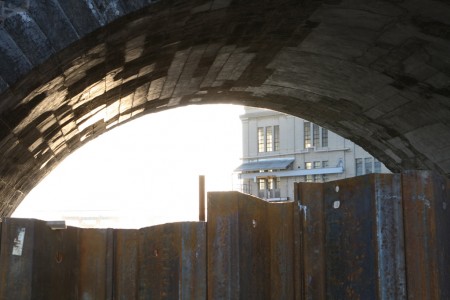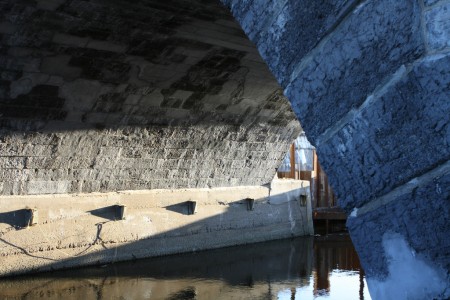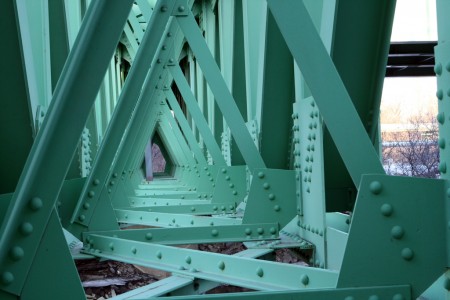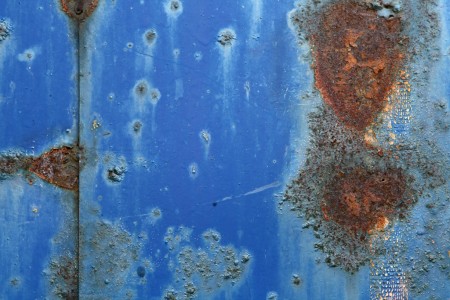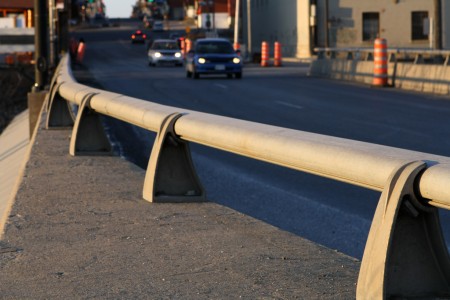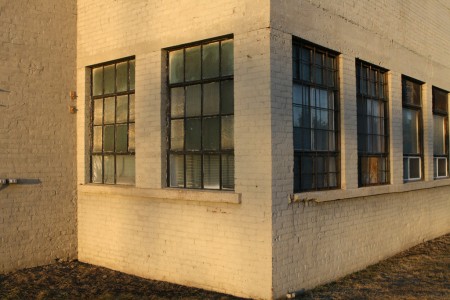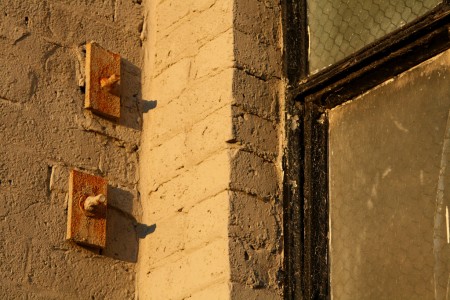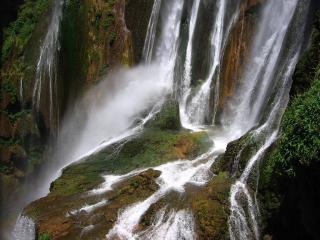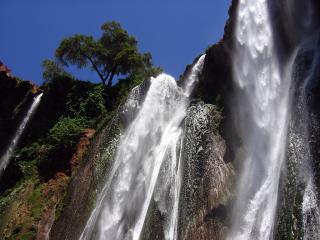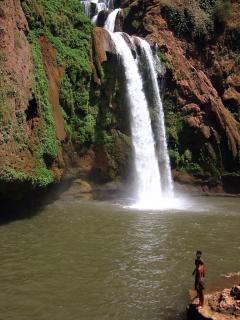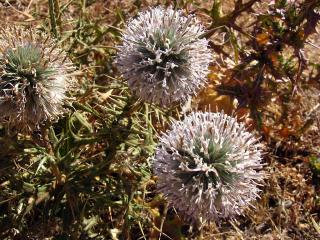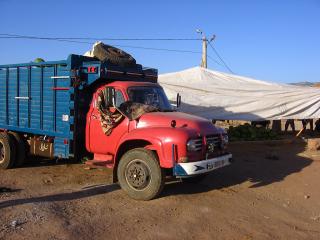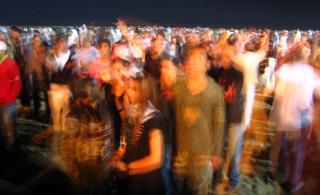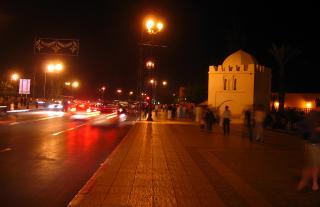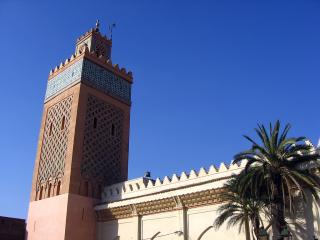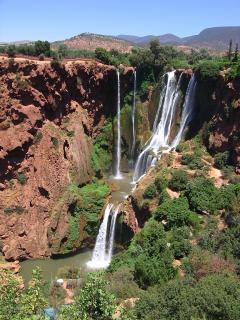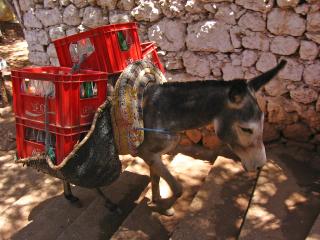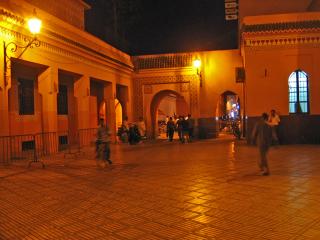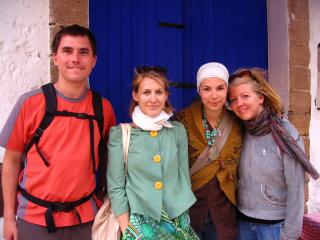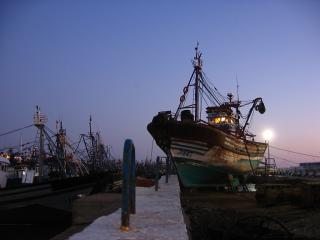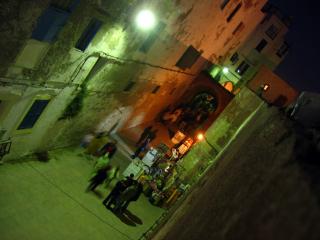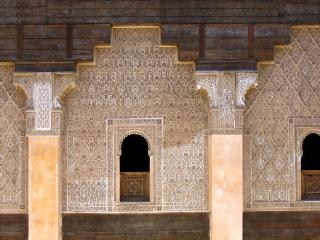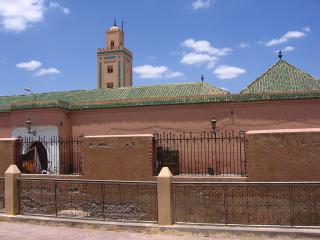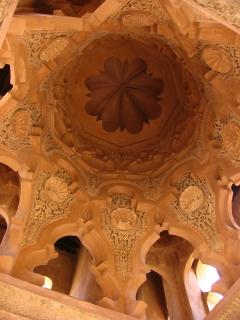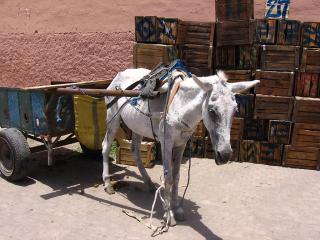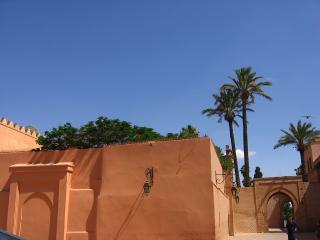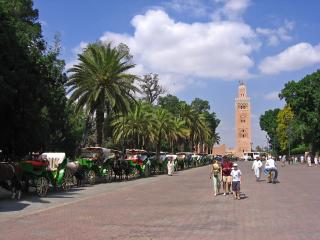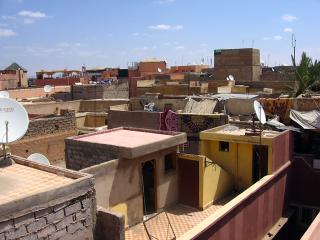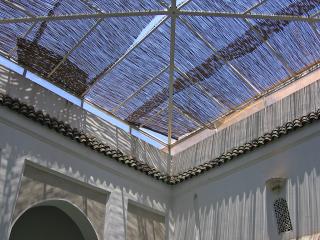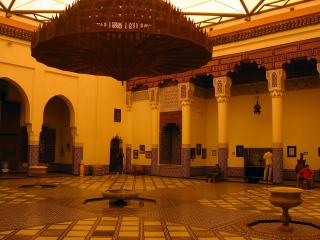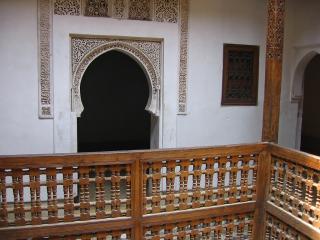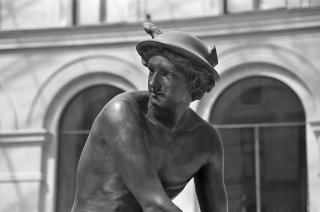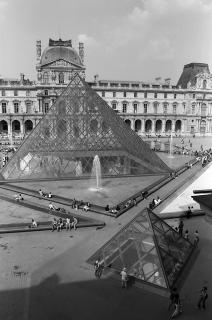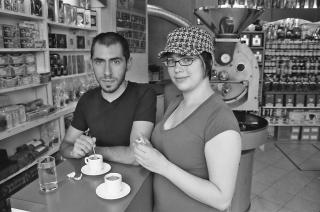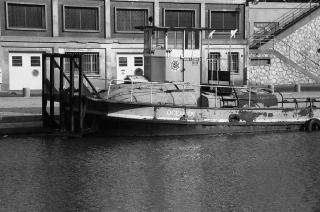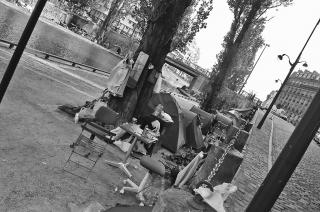Despite being right at the cusp of spring, the nights I recently spent in Montreal were decidedly mild and enjoyable. They made it more than worthwhile to lug around a tripod.
In addition to the sometimes intriguing distortion produced by very wide angle lenses, one useful property is how their short focal lengths allow for relatively long handheld exposures, without too much danger of camera shake. It is certainly novel to be able to shoot at 1/20″ with a lens lacking in image stabilization capabilities.
I think I was the oldest person at this party, by the space of several years. Nonetheless, it was a colourful and entertaining event and a nice counterpoint to the calmer parts of the weekend.
Climbing Mont Royal at night is certainly one of the nicest and most scenic things to do in Montreal. Personally, I think the city is best viewed from above at night, though it can also be quite pleasant around sunset.
I have fond memories of going up in the midst of an intense but very warm thunderstorm with my friend Viktoria, back when I was participating in the Summer Language Bursary program.
I like the interplay of colours here, particularly the orange and green on the stairs and the blaring purple from inside the building.
While Montreal does have a substantial urban core, it certainly cannot rival Toronto for sheer bulk or Vancouver for startling growth. Indeed, whereas Vancouver felt substantially denser when I visited in December than when I was there a few years before, Montreal basically seems like the same place now as it was in 2003.
Rue St. Denis may be a bit touristy, but it contains a substantial variety of pubs and restaurants, as well as some interesting murals and graffiti.
Fondue is actually a very nice dinner option, when you want to have an extended conversation. The need to individually cook each item to be eaten extends the meal in a rather pleasing and natural way.
I have always rather liked the standard architecture of Montreal lowrise houses: with a balcony at the second level and a staircase rising up to it either directly or in a curve.
It is around this monument in Parc Mont Royal that the famous ‘Tam Tam Jams’ occur, along with many other informal social activities. While I was taking these night photos, there was unusual shouting and drumming emerging from somewhere within the darkened trees uphill, along with the noticeable scent of wood smoke.
The distortion from a wide-angle lens does seem to have the commendable property of being able to make a vertical monument look like the heavy foot of some elephant or dinosaur.
The vertical lines here are lens flares, induced by the streetlights that run in front of the monument (and which make it so nicely lit for long exposures, from that direction).
Throughout the Easter weekend, these parks were full of people picnicking, playing sports, and generally enjoying themselves. At night, the area is rather more gloomy and desolate. The few people who you do encounter – often as they skirt along in the shadows – sometimes make you glad for being a relatively large and tall man, with a substantial aluminum tripod at hand.
These trees have a rather menacing look that matches the atmosphere of the area, at least on some nights.



